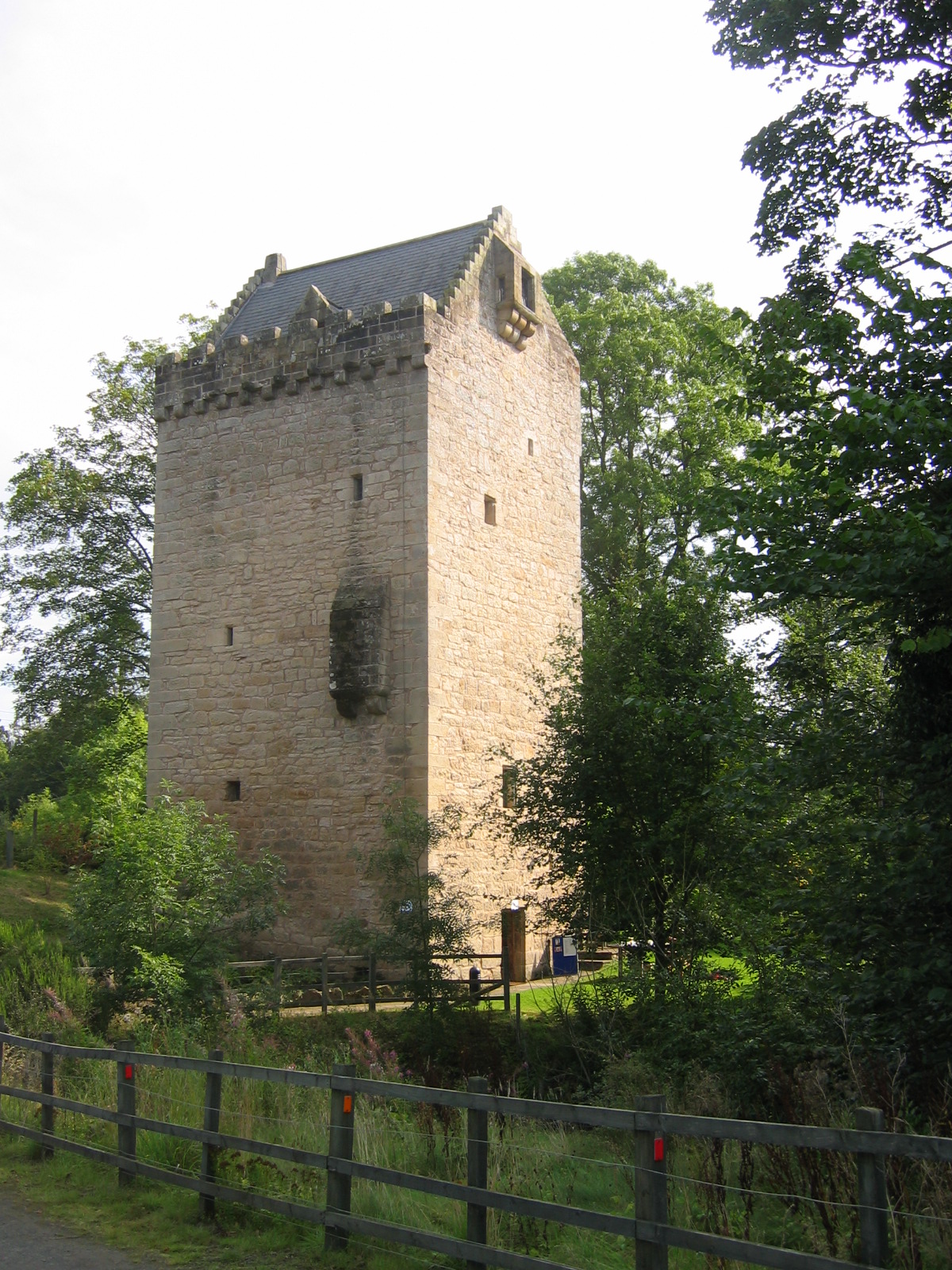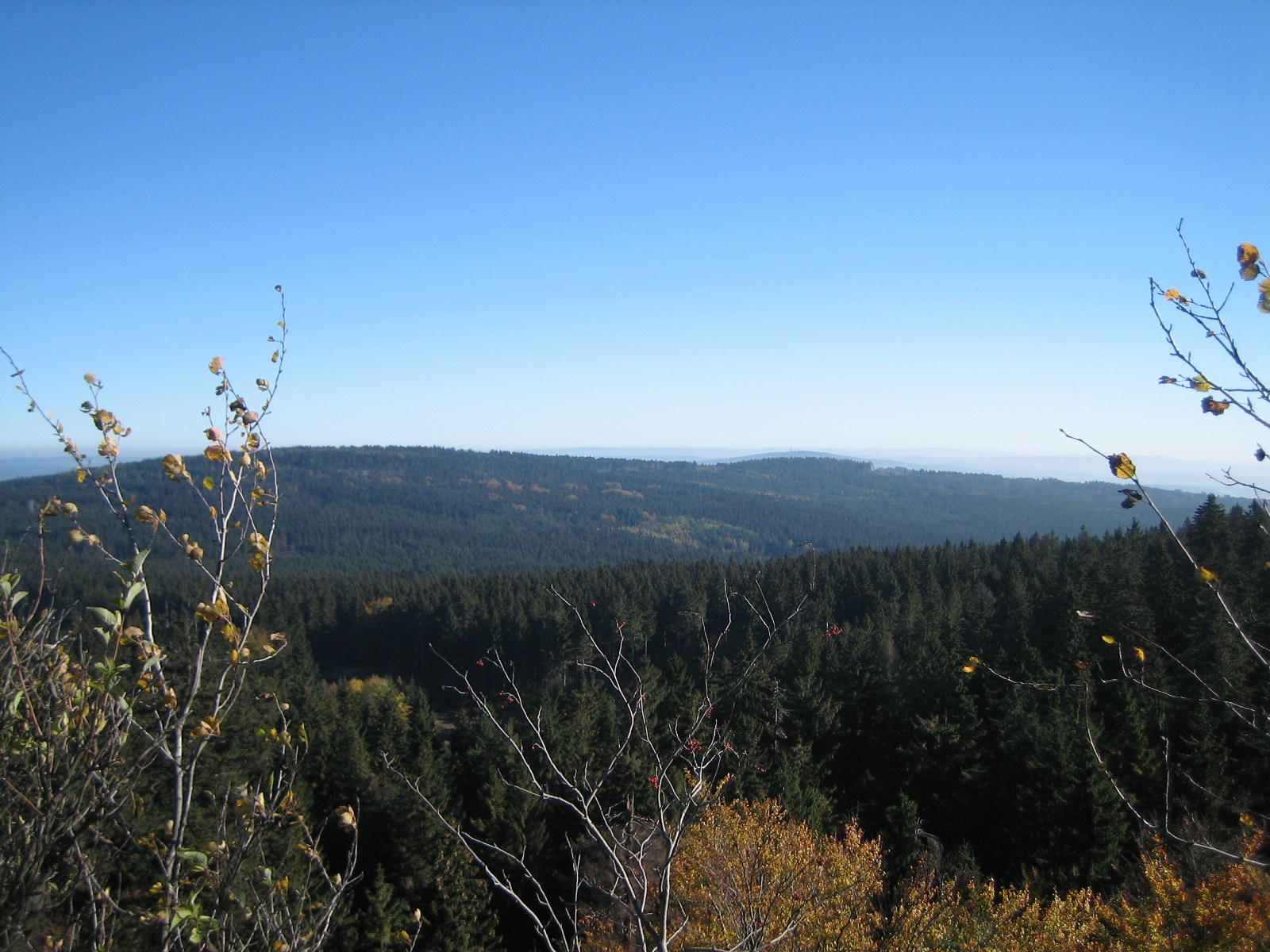|
Epprechtstein Castle
Epprechtstein Castle (german: Burg Epprechtstein) is a former hill castle on the mountain of the same name, the Epprechtstein, which rises above the village of Kirchenlamitz. History An ''Eberhardus de Eckebretsteine'' was first mentioned in the records in a deed of gift by Duke Otto II of Merania in 1248. In 1308, King Henry VII of Germany enfeoffed the brothers Ulrich, Henry and Nickel, of the House of Sack, with the fortress of Epprechtstein; the Wilds were co-owners. In 1337 Emperor Louis the Bavarian enfeoffed ''Vogt'' Henry of Plauen with a small part of the castle. In 1352, the burgraves of Nuremberg stormed the robber baron castle and were given it as a fief. Amongst the attackers was Henry of Kotzau with his two brothers. In 1355/1356 they purchased the castle, the office and the parish of Kirchenlamitz outright, whereupon Epprechtstein and Kirchenlamitz became part of Sechsämterland ("Six District Land") and the seat of its officials, the ''Amtmänner''. The cast ... [...More Info...] [...Related Items...] OR: [Wikipedia] [Google] [Baidu] |
Tower House
A tower house is a particular type of stone structure, built for defensive purposes as well as habitation. Tower houses began to appear in the Middle Ages, especially in mountainous or limited access areas, in order to command and defend strategic points with reduced forces. At the same time, they were also used as an aristocrat's residence, around which a castle town was often constructed. Europe After their initial appearance in Ireland, Scotland, the Frisian lands, Basque Country and England during the High Middle Ages, tower houses were also built in other parts of western Europe, especially in parts of France and Italy. In Italian medieval communes, urban ''palazzi'' with a very tall tower were increasingly built by the local highly competitive patrician families as power centres during times of internal strife. Most north Italian cities had a number of these by the end of the Middles Ages, but few now remain, notably two towers in Bologna, twenty towers in Pa ... [...More Info...] [...Related Items...] OR: [Wikipedia] [Google] [Baidu] |
Hof (Saale)
Hof () is a town on the banks of the Saale in the northeastern corner of the German state of Bavaria, in the Franconian region, at the Czech border and the forested Fichtelgebirge and Frankenwald upland regions. The town has 47,296 inhabitants, the surrounding district an additional 95,000. The town of Hof is enclosed by, but does not belong to the Bavarian district of Hof; it is nonetheless the district's administrative seat. The town's most important work of art, the Hofer altar, dates from about 1465 and is exhibited in the Alte Pinakothek in Munich today. The Heidenreich organ in the parish church of St. Michaelis, completed in 1834, is considered one of Bavaria's finest. Hof is known for two local "delicacies", namely , a kind of hotpot, and sausages boiled in a portable, coal-fired brass cauldron, which are sold in the streets by the ''sausage man'' ( in the local dialect). There is also a particularly strong beer (), which is available only on the first Monday after Tri ... [...More Info...] [...Related Items...] OR: [Wikipedia] [Google] [Baidu] |
Oberkotzau
Oberkotzau is a municipality in Upper Franconia in the district of Hof in Bavaria in Germany Germany,, officially the Federal Republic of Germany, is a country in Central Europe. It is the second most populous country in Europe after Russia, and the most populous member state of the European Union. Germany is situated betwe .... References Hof (district) {{Hofdistrict-geo-stub ... [...More Info...] [...Related Items...] OR: [Wikipedia] [Google] [Baidu] |
Schwarzenbach An Der Saale
Schwarzenbach an der Saale is a town in the district of Hof, in Bavaria, Germany. It is situated on the river Saale, 11 km south of Hof. Within the town is the Gedenkstätte Langer Gang, a memorial to the Nazi victims of the Helmbrechts concentration camp, which was near Schwarzenbach an der Saale, and particularly of the victims of the death march from Helmbrechts concentration camp to Volary. After the war, Erika Fuchs, German translator of Carl Barks Carl Barks (March 27, 1901 – August 25, 2000) was an American cartoonist, author, and painter. He is best known for his work in Disney comic books, as the writer and artist of the first Donald Duck stories and as the creator of Scrooge McDuck ...'s comics, lived and worked in Schwarzenbach for fifty years. A museum in memory of her and her work was opened in the town in 2015, known as Erika-Fuchs-Haus. Jean Paul, a German Romantic writer, also lived in this town from 1790 to 1794. Schwarzenbach is also ment ... [...More Info...] [...Related Items...] OR: [Wikipedia] [Google] [Baidu] |
Großer Kornberg
With its peak the Große Kornberg is the northeast cornerstone of the Fichtel Mountains in south Germany. It forms a wooded ridge, which is recognisable from a long distance by its former military surveillance tower It is also the local 'house' mountain of Schönwald (Bayern), Schönwald and Schwarzenbach an der Saale. Geologically, granite is the underlying rock. Its lower strata are grainy, but the upper layers contain fine-grained granite. Abandoned quarries are evidence of the ancient craft of stonemasons. The oldest known document dates to 1317 and refers to the mountain as the ''Kurnberg''. According to Professor Dr. Adolf Gütter, in Middle High German ''Kurn'' means 'mill', so it meant 'mill mountain'. On its northwest slopes there was once a village called Mühlhausen but it had been abandoned by the end of the 14th century. The Kornberg itself lacks the imposing rock towers and ''felsenmeer'' terrain typical of other mountain peaks in the Fichtelgebirge. However, its s ... [...More Info...] [...Related Items...] OR: [Wikipedia] [Google] [Baidu] |
Waldstein (ridge)
The Waldstein is a mountain range in the northern part of the Fichtel Mountains in Upper Franconia, Bavaria, in southern Germany. Geography Its highest elevation is the Großer Waldstein which is high. In addition, the Epprechtstein, the Kleiner Waldstein and the ridge of the Hallerstein Forest, south of the town Hallerstein are all located in this mountain range. To the east the Großer Kornberg is the end of the mountain chain, while in the west it falls gently away at Gefrees. Geology Geologically the massif consists mainly of granite. The history of its orogeny begins in the Precambrian about 750–800 million years ago – almost 20% of the earth's history. Only a few of these mountain stump ranges (''Rumpfgebirge'') remain today. File:Kristalle waldstein 002.JPG, Crystal from the Waldstein File:Kristalle waldstein 010.JPG, Mountain crystal or berg-crystal File:Tourmaline-118856.jpg, Tourmaline Language and settlement The eastern part of the Waldstein ridge f ... [...More Info...] [...Related Items...] OR: [Wikipedia] [Google] [Baidu] |
Viewing Platform
An observation deck, observation platform, or viewing platform is an elevated sightseeing platform usually situated upon a tall architectural structure, such as a skyscraper or observation tower. Observation decks are sometimes enclosed from weather, and a few may include coin-operated telescopes for viewing distant features. List of public observation decks List of highest observation decks by type Timeline of world's highest observation decks This is a timeline of the development of world's highest observation decks since the inauguration of the Washington Monument in 1885. Under construction * Unknown Jeddah Tower, Jeddah, Saudi Arabia. 637 m, Level 157 *Unknown Goldin Finance 117, Tianjin, China. 578.7 m, Level 116 * 2023 (est.) Merdeka 118, Kuala Lumpur, Malaysia. 517.7 m , Level 117 (Spire observation level at 566 m) * 2027 (est) Taipei Twin Towers, Taipei, Taiwan. 347 m, Level 73 Approved * 2025 (est.) Signature Tower Jakarta, Jakarta, Indones ... [...More Info...] [...Related Items...] OR: [Wikipedia] [Google] [Baidu] |
Granite
Granite () is a coarse-grained ( phaneritic) intrusive igneous rock composed mostly of quartz, alkali feldspar, and plagioclase. It forms from magma with a high content of silica and alkali metal oxides that slowly cools and solidifies underground. It is common in the continental crust of Earth, where it is found in igneous intrusions. These range in size from dikes only a few centimeters across to batholiths exposed over hundreds of square kilometers. Granite is typical of a larger family of ''granitic rocks'', or '' granitoids'', that are composed mostly of coarse-grained quartz and feldspars in varying proportions. These rocks are classified by the relative percentages of quartz, alkali feldspar, and plagioclase (the QAPF classification), with true granite representing granitic rocks rich in quartz and alkali feldspar. Most granitic rocks also contain mica or amphibole minerals, though a few (known as leucogranites) contain almost no dark minerals. Granite is ... [...More Info...] [...Related Items...] OR: [Wikipedia] [Google] [Baidu] |
Ruins
Ruins () are the remains of a civilization's architecture. The term refers to formerly intact structures that have fallen into a state of partial or total disrepair over time due to a variety of factors, such as lack of maintenance, deliberate destruction by humans, or uncontrollable destruction by natural phenomena. The most common root causes that yield ruins in their wake are natural disasters, armed conflict, and population decline, with many structures becoming progressively derelict over time due to long-term weathering and scavenging. There are famous ruins all over the world, with notable sites originating from ancient China, the Indus Valley and other regions of ancient India, ancient Iran, ancient Israel and Judea, ancient Iraq, ancient Greece, ancient Egypt, Roman sites throughout the Mediterranean Basin, and Incan and Mayan sites in the Americas. Ruins are of great importance to historians, archaeologists and anthropologists, whether they were once indiv ... [...More Info...] [...Related Items...] OR: [Wikipedia] [Google] [Baidu] |
Fichtel Mountains
The Fichtel MountainsRandlesome, C. et al. (2011). ''Business Cultures in Europe'', 2nd ed., Routledge, Abingdon and New York, p. 52. . (german: Fichtelgebirge, cs, Smrčiny), form a small horseshoe-shaped mountain range in northeastern Bavaria, Germany. They extend from the valley of the Red Main River to the Czech border, a few foothills spilling over into the Czech Republic. They continue in a northeasterly direction as the Elster Mountains, and in a southeasterly direction as the Upper Palatine Forest. The Fichtel Mountains contain an important nature park, the Fichtel Mountain Nature Park, with an area of . Etymology The first person to write about the Fichtel Mountains, Matthias of Kemnath (actually Matthias Widmann, born 23 February 1429 in Kemnath) reported in 1476: ''Ein bergk, hoch, weitt, wolbekant ligt in Beiern, gnant der Fichtelberg'' ("A mountain, high, wide and well-known, lies in Bavaria, known as the Fichtelberg"). In descriptions of the border in 1499 an ... [...More Info...] [...Related Items...] OR: [Wikipedia] [Google] [Baidu] |






